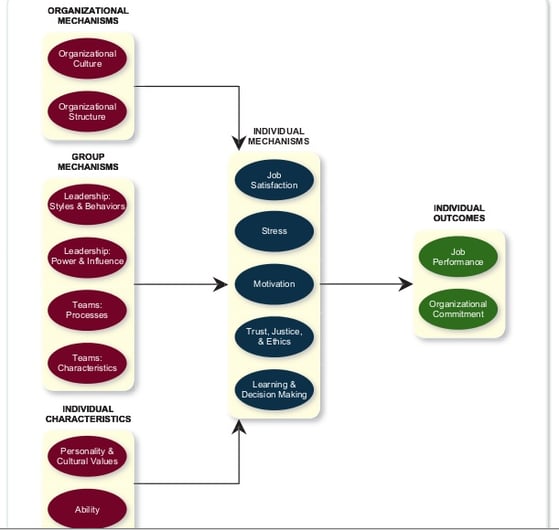What Influences Employee Engagement?

Last time, we discussed the importance of employee engagement. If you missed it, go ahead and check it out. However, recognizing the effects of employee engagement on a company isn't the same as understanding it. What makes employees dedicated? What makes them want to expend the effort it takes to work to their highest potential? What factors influence employee engagement?
Employee Engagement Based in Academia
To some extent, an employee's personality affects engagement. People predisposed to engagement are more likely to become an engaged. In the right circumstances, personality can be overwritten. Let's look at organizational behavior to determine what contributes to engagement. Organizational behavior is the study of how people interact within groups. It brings a scientific lens into the management of workers. Almost all academic and applied theories for management come from this field. The whole field of organizational behavior describes two major subtopics: Organizational Commitment and Job Performance. These describe how invested an employee is in their company and their job. Combining these topics creates the concept of employee engagement. The entirety of this field of study exists to explain employee engagement. Here is a summary diagram from Organizational Behavior: Improving Performance and Commitment in the Workplace.
The Integrative Model of Organizational Behavior
Each of those topics are entire sub-fields of Organizational Behavior.
It's safe to say the influence of employee engagement is a massive topic.
It would be my absolute delight to describe each category, yet that would be far too detailed for a single blog post. So, instead, I'll cover the gist of it. Everything in a workplace affects an employee’s engagement level. Company structure, employee treatment, communication, task difficulty, and more play roles. The above graphic breaks up this wide notion of “everything” into manageable categories.
First Level Influences on Employee Engagement:
First Level Influences include Organizational Mechanisms, Group Mechanisms, and Individual Characteristics. Both the organizational and group mechanisms are controllable by the company. Organizational mechanisms contain the background structure and environment of the company. Group Mechanisms cover how employees interact within their work team. Companies can control these influences through official and unofficial policies. Individual Characteristics refer to individual employee's personality and qualities. The only place where the company can control this is during the hiring process.
Second Level Influences on Employee Engagement:
First Level Influences lead to Second Level Influences in employees. These affect the employee's engagement. This category contains job satisfaction, stress, motivation, trust, a sense of fairness, ethics, the ability to learn, and decision making. Some are abstract concepts but are still essential for engagement. Employees need to trust the company to be fair and to match up with their personal ethics. Decision making and the ability to learn are more easy to measure. Employees control their own company involvement and knowledge which will shape other aspects.
To learn more about engagement in the workforce, check out our white paper, The Importance of Employee Engagement.
Now we know what engagement is, why it's important, and what influences it. Next, we will cover how you can foster engagement in your company. Check back for our next installment in this series: Intranets and Engagement.